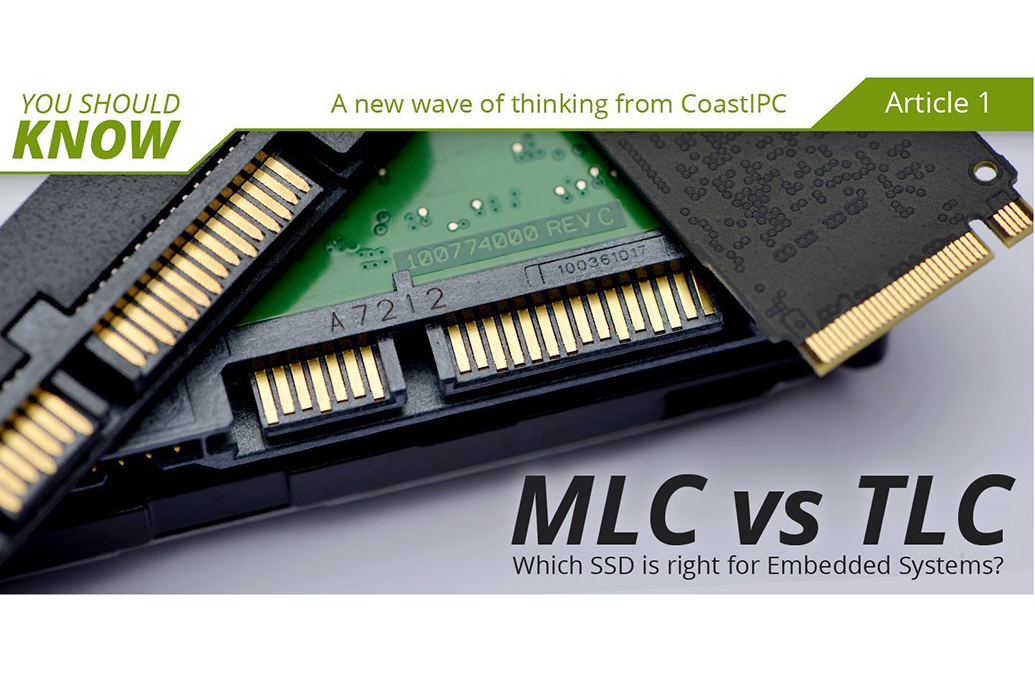
Multi level cell (MLC) solid state disks (SSDs) strike the right balance for cost, number of read/write cycles, and read/write speed in most embedded system applications.
When choosing any technology two things ultimately count most: performance and total cost of ownership. Most people buy products that do what they want done better than alternatives and at a cost to acquire and use that’s favorable versus alternatives. The hard part is deciding how much a higher performance justifies a higher cost or how much a lower cost justifies a lower performance. On the one hand, paying for more performance than you’ll use doesn’t make sense. On the other hand, neither does saving money by not getting the essential performance you would use.
This performance-versus-cost decision gets easier, however, once you realize which of these two variables ultimately counts more. And in the embedded system space, that variable is almost always performance. Having an embedded system that only performs as required “sometimes” is simply not an option when you’re talking about applications like industrial control or autonomous vehicles.
That’s why it’s so important for buyers of embedded systems to realize that buying triple level cell (TLC) SSDs probably means giving up performance their applications need — specifically read/write speed and the number of read/write cycles they can expect over the SSD’s lifetime. A different SSD technology — MLC — is a much better choice. It costs more (but not a lot more) than TLC — but offers speed and endurance TLC can’t match. MLC also costs a lot less than the other major SSD technology — single layer cell (SSL) — that is more specifically suited for enterprise applications requiring endurance and speed beyond what most embedded applications call for. Cloud computing data centers are a good example.
TLCs Need More “TLC”
The defining difference between SLC, MLC, and TLC is the number of bits in a single memory cell that can be either on or off when charged. SLC has one bit per cell, MLC has two, and TLC has three. The more bits per cell, the denser (and therefore hotter, hence less reliable) the device. Fewer bits means the device can store less data; however, the device is cooler, so more reliable and also faster. And as the number of bits goes up, the lifespan of the storage device — as measured in number of read/write cycles — goes down. The following benchmarks are typical:
| SLC | MLC | TLC | |
| Bits per Cell | 1 | 2 | 3 |
| Max Read/Write Cycles | 100,000 | 10,000 | 5,000 |
| Reliability/Endurance | Excellent | Very Good | OK |
| Cost | $$$ | $$ | $ |
| Use Case | Industrial Computing | Industrial Computing/Consumer | Consumer |
TLC’s significantly fewer cycles limits the technology’s utility to everyday consumer use like web browsing, email, photos, and so forth. For embedded systems, however, it’s probably a deal breaker. Unlike slower read/writes, fewer lifetime cycles is not something you can mitigate by adding cache (which also adds cost). Likewise, SMART (self-monitoring analysis and reporting technology) is an option for mitigating TLC’s shorter MTBF and lifespan — but, again, that adds costs too. For many embedded systems customers, the MLC option is the one that is actually less expensive to acquire than TLC once such mitigation measures are factored in.
But it is after TLC is deployed in production that the biggest financial hit occurs — as measured in avoidable repairs, stoppages, accidents, or worse. For embedded systems, whichever technology is inherently more reliable, less complex, and faster without mitigation is also usually the less expensive technology for OEMs and users.
